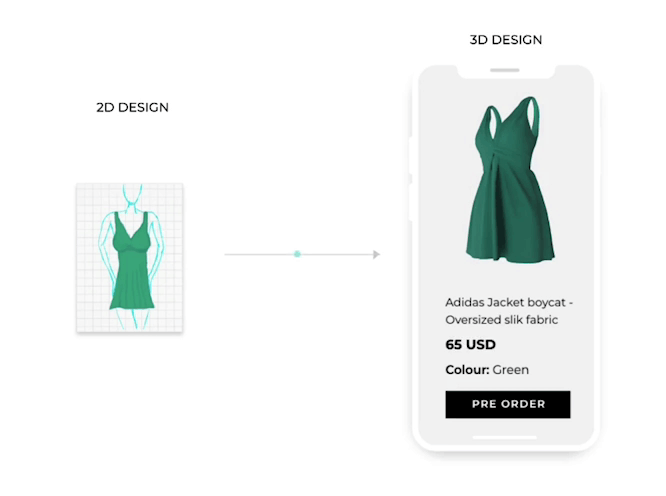2021 was a pretty wild year for ecommerce.
From figuring out how to continue running a business safely during the ongoing COVID-19 pandemic, to navigating consumer privacy changes related to the iOS 15 updates, and dealing with a global supply chain crisis, store owners had to pivot their business strategies more than ever before.
Right now, shoppers are continuing to migrate from brick and mortar stores to the internet to do their shopping, so it’s more important than ever for store owners to focus on maintaining and growing their existing customer base.
Based on these events throughout the year, there are a few ecommerce trends I see shaping the first half of 2022 and beyond. Keep your eyes peeled—you’ll want to stay ahead of these trends.
1. Voice commerce will grow—a lot
As long as you have a device with a voice assistant built in, you can make purchases with, well, your voice!
“Siri, order a box of Lindt chocolates.”
Voice commerce has been a growing trend for the last few years, and users continue to become more comfortable with voice search—especially on mobile phones and smart devices.
In fact, voice shopping is expected to account for $40 billion in sales in 2022 (compared to $2 billion in 2017 when it first started gaining traction), according to Statista.
With users getting more comfortable with voice-activated devices from brands like Amazon, Google, and Apple, voice commerce will continue to grow. So if you haven’t already optimized your product catalog for voice search, 2022 is your year to do it!

Note: as an ecommerce business, you rely heavily on having a visual website presence to show off your products, and customers like to take time browsing through your offerings. Don’t replace your search features with only voice commerce.
Instead, use voice commerce efficiently by setting it up for users to easily purchase repeat orders.
For a group of customers buying products weekly or monthly, they won’t need the visual confirmation page on your website. Making it easy for them to order with a simple voice command cuts down browsing time significantly.
2. Set up augmented reality (AR)
Did you know 32% of customers already use AR while shopping, and 71% are willing to shop more often if AR is available?
AR can be a real game-changer for certain ecommerce verticals, especially ones that struggle to drive purchases because users are used to seeing the physical product before deciding to buy it.

Source: Peepers
Categories like home goods, apparel, accessories, and electronics can really benefit from this technology. Giving shoppers a more immersive experience by letting them see your products in their physical location, on their body, or how it looks in a 360-view can really move the needle towards more conversions.
After all, wouldn’t you be more likely to buy a sofa if you could see exactly how it looks in your living room? AR can help users get more of this in-store shopping experience right from their personal laptop or phone.

Source: Hexa 3D
There are tons of apps available to Shopify users that make it easy to set up 3D experiences. This technology isn’t just for enterprise-level sites anymore!
3. A quick and easy checkout is key
Offering an easy checkout experience is one of the quickest wins to reduce your cart abandonment rate.
More and more payment methods are becoming available, including the ability to pay for items in 4-part installments. Offering easy third-party payment options like Shop Pay, Apple Pay, and PayPal is quickly becoming table stakes for ecommerce sites.
Customers now expect these options to be available at checkout. It’s up to you to cater to this expectation.
Don’t just take my word for it: a recent study by Baymard Institute found that nearly 1 out of 5 shoppers have abandoned a cart in the last quarter due to a “too long and/or complicated checkout process.
These additional options cut down the time it takes for someone to punch in all of their credit card and billing information.
And don’t forget the rise in cryptocurrencies.
While still relatively niche compared to other methods, cryptocurrencies are a fast-growing payment method. Statista data even shows that by the end of July 2021, Ethereum was processed more than 1.1 million times per day. You can even integrate crypto payments on Shopify with a service like Coinbase.
4. More users will purchase through social selling
Considering 54% of social media users use social media platforms to research products, the logical next step for shoppers is to be able to purchase these products right on those same platforms.
Major social networks like Facebook, Instagram, and TikTok have all rolled out in-app shopping recently, making it incredibly easy to discover products and get directed to their PDP in one click.
Understanding who your current customers are, along with where you’re acquiring future customers, can help you craft a strategy for social selling.
For example, you need to know which social platforms your customers are using (or, which ones have a customer base you want to target), and let that inform your selling strategy.

Source: Cocokind
5. Personalization will be even more important
After the iOS 15 changes, personalization became a big priority for ecommerce brands. People turned to zero-party data and revamped their strategies toward owned marketing channels. This trend will continue in the new year, and the expectations from customers will get even more robust.
Now, customers expect a deeper level of personalization from their favorite brands; some websites are moving into hyper-personalized experiences that cater to each individual customer.
To keep up with your competition, here are a few ways to spruce up your website personalization experience:
- Product recommendations are an easy way to increase average order value while also further personalizing the shopping experience for a given customer.
- Integrating an email marketing strategy to send personalized content, especially around promotions, sales, and new product launches, is a great way to make sure customers feel like they’re receiving relevant content.
- Chatbots are getting smarter, and these can be used for things like helping customers find the right item or answer questions about products they're considering purchasing. Chatbots are quickly becoming a digital sales assistant, not just a customer service bot.
6. Accessible websites are a must
Over the past year, more people have started talking about the importance of website accessibility. Website accessibility optimization is about providing everyone equal access to your ecommerce store.
And here’s the truth: There are 2.2 billion people worldwide with vision impairments ranging from mild, moderate, to severe, and blindness (WHO). Additionally, there are millions of people in the US alone with hearing, vision, or cognitive impairments.
Essentially, inaccessible ecommerce sites are limiting shoppers with disabilities from being able to use the site and make purchases.
"If you're an architect and you're designing a building, you wouldn't just omit ramps. You need that for everyone to get there. It's the same thing with websites."
- Kellie Kowalski
So how can you improve your ecommerce site to be in line with ADA requirements? Not only do we have an in-depth guide that you can read here about website accessibility, but I’ll share a few tips below:
- Use proper semantic markup to give more context about the content on the page to screen readers, the browser, and search engines, so the user can understand and navigate the page more clearly.
- Button size should always be a minimum of 42 pixels by 42 pixels.
- Text needs to be able to be resized up to 200%.
- Websites need to be tested for ease of use—not just with a mouse but also with a keyboard and screen reader. Make sure your content is properly programmed to provide the right context for users as they use these tools to navigate your site (e.g. ARIA attributes).
- Images, videos, memes—they all need alternate text to provide context for users.
- Never auto-play videos or audio.

Again, these are just a few of the many considerations for website accessibility. If you’re looking to make improvements, our website accessibility guide has a free checklist you can download.
Get ready for everything 2022 brings you and your customers
Out of these six trends, are there any you’re already working on for the new year?
I’m already seeing these trends emerge from the brands I’m working with, and I’m sharing this information so you can stay competitive.
Remember, customer’s expectations when shopping online are only continuing to get more robust. If you can stay ahead of the game and offer a helpful, engaging customer experience, you’re sure to stand out.
If you want help implementing anything that I mentioned in this article, feel free to reach out to learn how we can help you—just visit our contact page.
Good luck in 2022!
